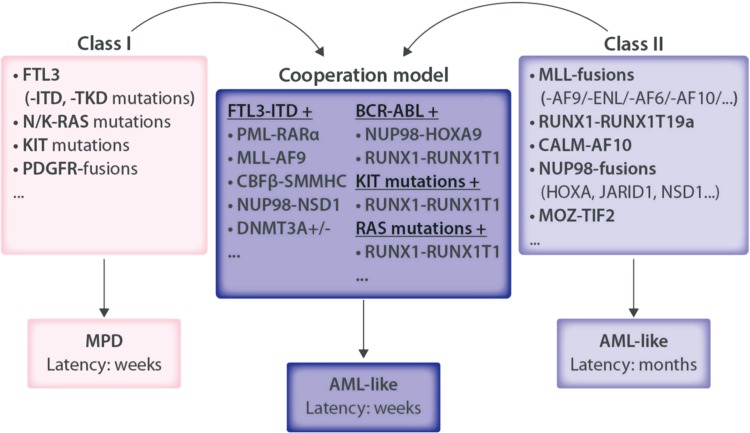Figure 2.
Functional cooperation of AML-associated mutations as shown by the retroviral transduction transplantation model supported a model of AML as a product of 2 classes of mutations. Multiple studies have shown that transplantation of BM cells retrovirally expressing AML-associated mutations in tyrosine kinases and other signaling mediators that support proliferation and survival without altering differentiation (often referred as “class I mutations”) leads to lethal myeloproliferative diseases (MPD). By contrast, mutations in epigenetic regulators that mostly affect differentiation and/or self-renewal (“class II mutations”) may led to development of an AML-like disease, normally after a rather long latency. Coexpression of a class I with a class II mutation achieved by retroviral cotransduction or by transduction of BM cells harboring a particular transgene generally leads to rapid development of a full penetrant AML-like disease in mice. AML = acute myeloid leukemia, BM = bone marrow.

